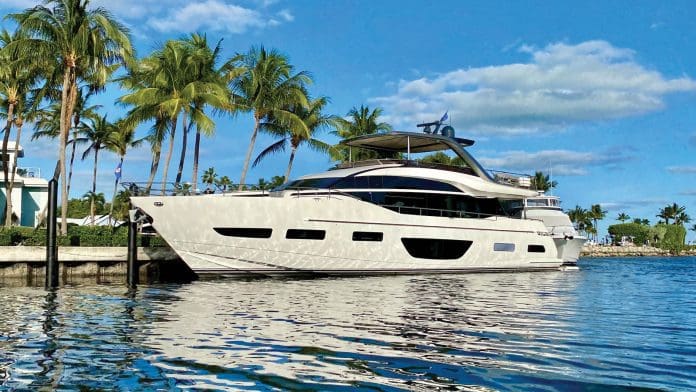It can’t have escaped many people’s notices that there has been a technological revolution in the last few decades unmatched by any other period in history.
Virtually every business and leisure sector has been touched by it – and it’s a revolution that has been driven by a number of influences. These range from the emergence of the digital world to an increasing focus on sustainability and environmental concerns.
Then, of course, there is the development of new materials and the innovative manufacturing techniques that have gone hand in hand with these advances.
All these elements, and more, have come together to change the face of boating in several ways.
Greater comfort and safety
Leisure boating is always intended to be a pleasurable experience and technology is helping to make it even more comfortable and satisfying than ever before.
For example, innovations in engine design and soundproofing are helping to make their operation quieter than previous generations, a feature not just enjoyed by those on board, but all those around them too.
Another feature of life on water that many find it hard to adapt to is the motion of the boat. There’s nothing quite like seasickness to ruin a day afloat so many passengers are now welcoming the arrival of increasingly effective gyro stabilisation systems.
A prime example is the innovative new approach from Seakeeper that can eliminate up to 95% of the roll thanks to a centrifugal fly wheel that uses minimal amounts of electrical power to rotate at over 550 mph.
In terms of safety, other great strides are being made including AI navigation systems that are refining auto-pilot systems to previously unknown levels of control and accuracy as well as incorporating integrated GPS systems.
Reducing the environmental impact, increasing sustainability
While not being as environmentally unfriendly as many activities, boating does have an impact. This is unfortunate as it affects many of the most sensitive eco-systems in the world, as well as using up valuable natural resources.
Fortunately, technology is also playing a part to reduce its impact. Just as electric cars are becoming a more common sight on our roads, improvements in battery technology mean that electric engines are increasingly being fitted to boat. Better still, many are using solar power to charge them.
And let’s not forget that most green of transportation options, sail power. New materials and designs are making the construction of sails cheaper and more sustainable through the use of materials like base polymers which no longer require gluing and are fully recyclable.
Similarly, the increased use of wood composite and aluminium in modern hull design means that these can also be recycled or repurposed at the end of a boat’s useful lifespan.
Designing, buying and chartering boats
Another area in which technology is having a very significant impact in the world of boating is in the business of boat design, purchase and even chartering.
As in so many other areas ranging from medicine to education and architecture to real estate, the arrival of virtual reality has been a game changer in so many ways.
For the designers of yachts who are often given multi-billion dollar commissions by their wealthy clients, the first step has often been to create a scale model, or series of models, to given an idea of what the completed vessel will be like.
But through the use of computer aided design and VR the designer can “walk” a client through what every aspects of every corner of the boat will be like. In turn, this gives the owner the chance to give real and useful feedback that can be incorporated into the design, potentially saving huge extra expenses if changes are demanded further down the line.
The nature of boats and boat-buying can also sometimes mean that the perfect vessel for a would-be purchaser might be moored thousands of miles away where it’s simply too difficult to travel for a viewing.
Again, even better than video tours of the boat in question are virtual reality ones as they can give a far more accurate picture of what it feels like to be on board, helping hugely to influence a decision about whether or not to buy. It also seems likely that we are not very far from seeing “virtual” boat shows run alongside the actual events.
Of course, owning a boat is a luxury that relatively few people can afford, but chartering is a very popular alternative. Even in this field, technology is playing a part.
A prime example comes in the form of websites like www.borrowaboat.com. This is a simple way to match up the type and size of boat needed for a charter. Boating fans simply need to browse through all the options available to pick the one that best meets their needs. This works perfectly both for those who want to skipper their own boat or hire the services of a captain and crew. It is also the ideal way for boat owners to maximise income from their vessels when not being used by themselves.
Expanding and linking the boating community
Last, but not least, the technology that has fuelled the explosion in social media has also led to countless online boating communities springing up. Sharing advice on everything from safety at sea to the best places to lay anchor, it is helping to create stronger bonds than ever between those who love boats and boating.
And that, perhaps, is the greatest legacy of all that is being created by technology.






